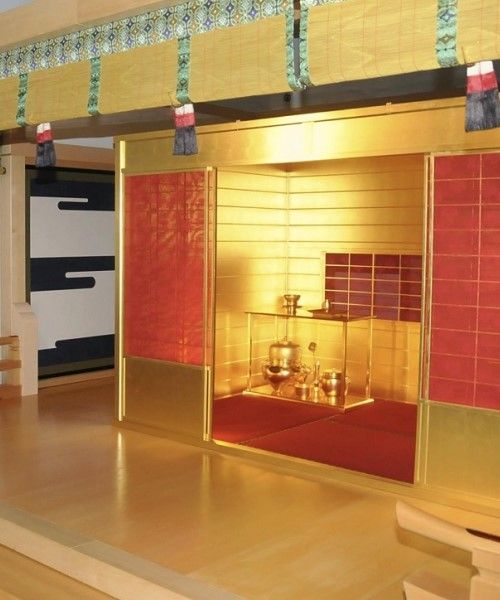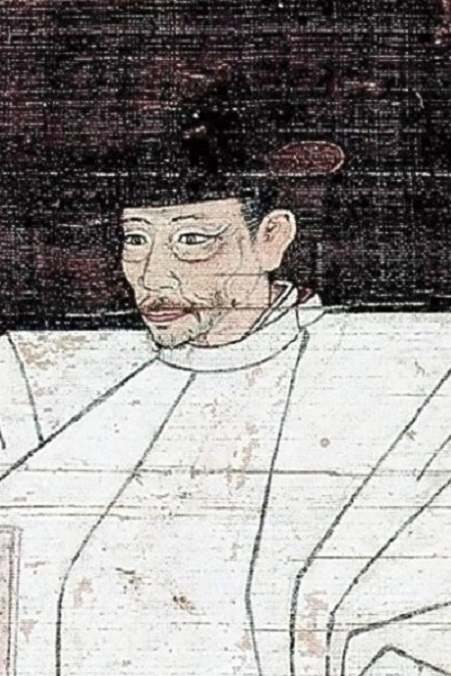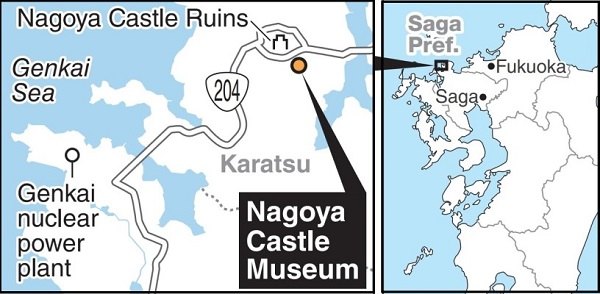
The Golden Tea Room in the collection of Kyoto City
11:05 JST, August 1, 2021
KARATSU, Saga — The gold tea room used by Toyotomi Hideyoshi, the late 16th-century warlord who unified Japan, will be re-created with gold leaf in Kyushu, where Hideyoshi based his operations for campaigns targeting Korea.

The Golden Tea Room restored by the MOA Museum of Art
The so-called Golden Tea Room is said to have been built at his order and was regarded as a symbol of his prosperity.
According to the Saga prefectural government, the luxury tea room was first used at a tea ceremony held in Kyoto in 1586, where Hideyoshi offered tea in the presence of the emperor. As the room could be dismantled and reassembled, it was later transported and used at Osaka Castle.

Portrait of Toyotomi Hideyoshi (detail)
Records show that the Golden Tea Room was also brought to Kyushu’s Nagoya Castle — not to be confused with the more famous Nagoya Castle in Nagoya City — for a tea ceremony in 1592.
Hideyoshi used the castle in northern Kyushu as his base to orchestrate his invasion of Korea.
The castle is long gone, but the ruins can still be found in Karatsu, Saga Prefecture.
According to the diary of a wealthy merchant in Hakata who participated in a tea ceremony at Kyushu’s Nagoya Castle, the tea room was estimated to be about 3 meters long, 3 meters wide and about 2 meters high.
The pillars, walls and ceiling were wrapped in gold leaf and the tatami mats were woven with imported red woolen cloth.
Centerpiece of tourism
Although all traces of the original tea room have been lost, the Golden Tea Room has been restored several times across the country. Based on records, the Ministry of Agriculture’s Museum of Art in Atami, Shizuoka Prefecture, has produced a replica, which was exhibited in Karatsu in 2005 and 2013. Another one is part of a collection in Kyoto City.
The Saga prefectural government decided to re-create an additional tea room and open it to the public in March next year at the Nagoya Castle Museum in Karatsu, which focuses on the castle as well as Hideyoshi’s dispatching of troops to Korea in 1592-98.
The Saga government plans to spend about ¥55 million, aiming to make it a centerpiece of tourism.
When tea ceremonies were held at Nagoya Castle in Kyushu, warlords from all over Japan, including founder of the Tokugawa shogunate Tokugawa Ieyasu and Date Masamune, a leading figure from the Tohoku region, set up camps around the castle. This led to the area’s population to surge to over 200,000, which was more than London’s at the time.

The site of Nagoya Castle is seen on the Genkai Sea in Karatsu, Saga Prefecture.
The ruins of Nagoya Castle, along with the 23 warlord encampment locations in the surrounding area, have been a government-designated special historical site. However, the number of visitors to the museum has been sluggish due to few special facilities and no castle towers on the ruins.
In addition to restoring the tea room, the Saga prefectural government plans to hold events reminiscent of the tea ceremonies held by feudal lords and develop the ruins of the camps for sightseeing.
“I’m sure the tea room will become a centerpiece for attracting visitors,” a museum official said. “We’d like to use it to revitalize the region as well.”

A map of the ‘Nagoya Castle Museum’ in Karatsu
Related Tags
"Features" POPULAR ARTICLE
-

Sanrio to Open Museum in Yamanashi Pref. Dedicated to Founder, Exhibits Include Hello Kitty, Other Characters
-

Autumn Foliage Surrounds Visitors to Tokyo’s Showa Kinen Park
-

My Daughter No Longer Speaks to Me, But I Want to See Her and My Grandchild
-

Kumamoto: Public Bath Refurbished as Library Where You Can Chat, Take Photos
-

Frozen Vegetables: Demand Rises for Convenient, Tasty Domestic Produce
JN ACCESS RANKING
-

Tokyo Economic Security Forum to Hold Inaugural Meeting Amid Tense Global Environment
-

Keidanren Chairman Yoshinobu Tsutsui Visits Kashiwazaki-Kariwa Nuclear Power Plant; Inspects New Emergency Safety System
-

Imports of Rare Earths from China Facing Delays, May Be Caused by Deterioration of Japan-China Relations
-

University of Tokyo Professor Discusses Japanese Economic Security in Interview Ahead of Forum
-

Japan Pulls out of Vietnam Nuclear Project, Complicating Hanoi’s Power Plans

























